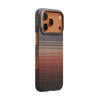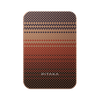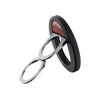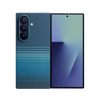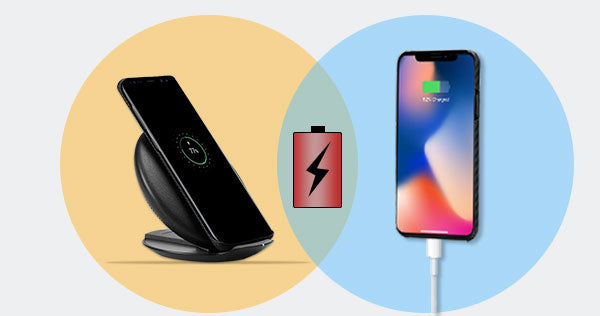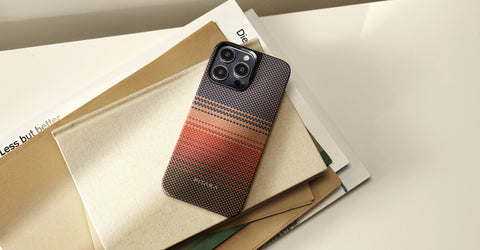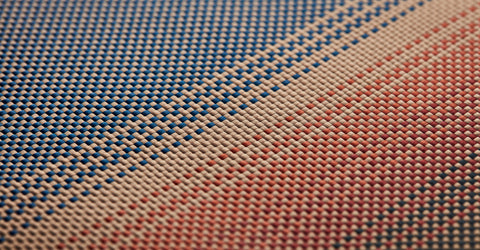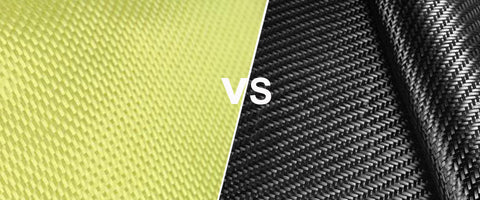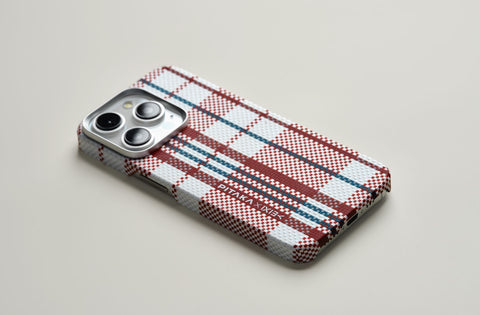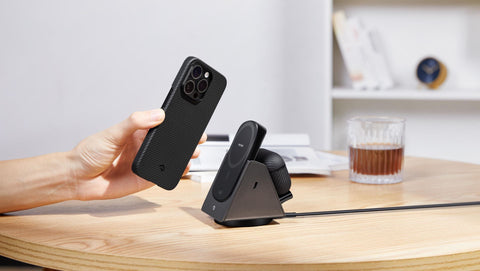Technology keeps changing, and so does how we charge our devices. Wireless charging has come up, making us question the old wired way. Some even ponder, "Will wireless charging take over the more traditional wired method?" Before the answer, we need to understand wireless charging technology.
How Does Wireless Charging Work?
The Qi standard is at the core of wireless charging. It's a protocol made by the Wireless Power Consortium. This standard makes charging easy by lining up coils in the pad and device. When they're close, an electromagnetic field sends energy to charge the device.
This tech is all about inductive coupling. The pad's coil creates a current in the device's coil. This lets energy move without wires, making charging easy.
Wired Charging: The Traditional Approach
Wired charging is still the go-to method for many iPhone users. It can give your iPhone a lot of power at once. This means you can charge your phone quickly, which is great when you're in a hurry.
However, wired charging isn't perfect. The need for cables can be a hassle. They might get tangled, lost, or broken, causing trouble and extra costs.
Also, the physical connection limits your movement while charging. You can't just walk around or use your phone freely. This can be a big drawback if you're always on the go.
What Are the Benefits of Wireless Charging over Wired Charging?
Simply put, wireless charging means that you can drop your handset device onto the charging dock, and it charges without having to plug anything into your phone, which is significantly easier than traditional wired charging.
What advantages does wireless charging have?
A) You don't need to fiddle with cables compared with wired charging

First, let's look at what people have to say about "Wireless charging benefits."
Just imagine the situation: no need to plug & unplug a cable every time you need to charge your phone. Drop your phone on the charging pad, and it starts charging without doing anything else. Everything looks elegant and neat; you don't need to worry about where you left your cable, or charger for that matter.
Having said that, not all the wires have gone. You still need a wire for your charging base to be connected with the power supply.
B) It reduces the wear and tear on your device.
As mentioned earlier, wireless charging doesn't need cables. There's no need for a USB port anymore, so no more strain on the cable, the charging plug, and the phone's charging port.
Furthermore, completely waterproof and dustproof phones are made possible.
C) It enables multiple smartphones to charge simultaneously instead of taking all kinds of cables with you.
For those who own several different phones, for example, an iPhone and an Android smartphone, they have to carry different cables and chargers when they travel.
However, if all of these smartphones are wireless charging enabled, a wireless charging pad becomes the "one size fits all" solution. Generally, wireless charging cell phones and chargers from different manufacturers comply with the Qi wireless charging standard, so one wireless charger can charge all Qi-enabled phones.
D) It provides a safer way to transfer power to your phone, which avoids putting your safety and data at risk.
Unlike plugging in a device, wireless charging transmits power without actually touching any exposed electrical connectors. In other words, it reduces the chance of connection failure and electric shocks. Many injuries and even death have been linked to improper use of cables or cell phones while charging. Sounds scary, right? But it happens. Wireless charging can be safer because as soon as you pick it up, charging stops.
There is also a lesser-known risk associated with "plugging into public USB chargers". These free USB public charging hubs may collect data while you are not aware of it, which is another reason why wireless charging is better.
E) Lastly, wireless charging looks so much neat.

A couple of wires is enough to make your table look messy. And not to mention the risks of tripping over cables.
Why Wireless Charging Is Not Everywhere Yet?
A) Wireless charging is slower and less efficient than wired charging.
AnandTech found that a Samsung Galaxy S6 can charge from zero percent to 100 percent battery power in 1.48 hours if you plug it in and charge over a wired connection. Whereas wireless charging takes 3.01 hours, twice as long as the wired charging solution.
They also found that as wireless charging takes more time to top up your phone, it will take more power to completely charge your phone too.
B) Wireless charging usually makes your phone overheat which can harm your battery.
There are many discussions about whether or not " wireless charger heat harms your battery" amongst those who have started charging their phones wirelessly. According to How-To-Geek, wireless charging usually generates a bit of waste heat and can even make the phone battery overheat compared to conventional cable charging. Some of that wasted power transforms into heat, and the extra heat will cause more wear and tear on the battery, speeding up the aging of your battery every time your phone battery gets exposed to high temperatures.
Why can't these lithium-ion batteries stand the heat? Have a look at this article on "battery thermal modeling and testing" from the U.S. Department of Energy's Office of Energy Efficiency and Renewable Energy (EERE).

Image credited by EERE
The picture above shows that battery life is significantly affected by geographic location (different temperatures) and thermal management. According to Pike Research's discovery, lithium-ion batteries perform optimally and last longer if they are kept between -10°C and +30°C.
But we seldom hear about phones having similar problems when charged with a wired charger.
c) A wireless charger is slightly more expensive than common cables
Check the price for cables and wireless chargers on Amazon, and you will find that most of the cables are less than $10 while usually, a wireless charger costs $20 more or less. That's quite a big difference.
The Bottom Line
Comparing wireless charging and wired charging is challenging as there are advantages and disadvantages to both.
If you opt for wireless charging, here's one recommendation: a 3-in-1 wireless charger for Apple devices, the MagEZ Slider.
The MagEZ Slider charges your iPhone 12/13/14/15, AirPods, and Apple Watch at the same times. It's one of the smallest 3-in-1 wireless chargers in the market. You can use it as a wireless charging phone stand while you work. Moreover, the modular design allows you to slide the MagSafe power bank out of the charger with your iPhone to charge on the go. Take the MFi-certified Apple Watch charger with you, so you can plug it into basically any USB-C device to charge your Apple Watch wherever you go.

